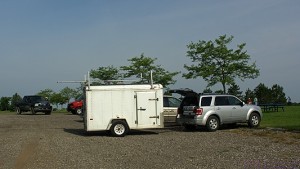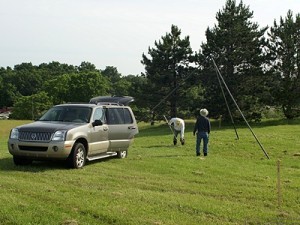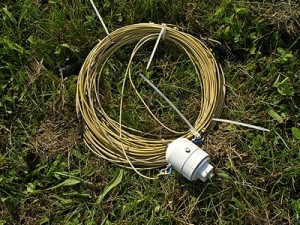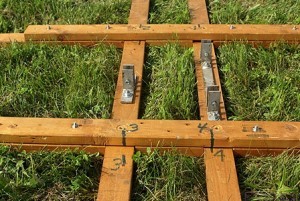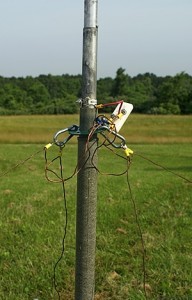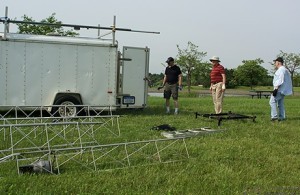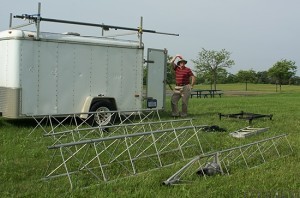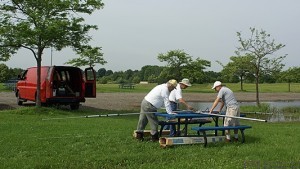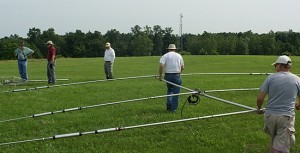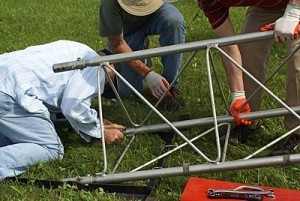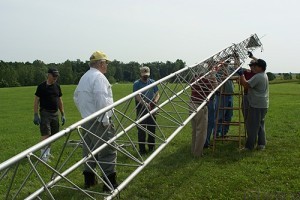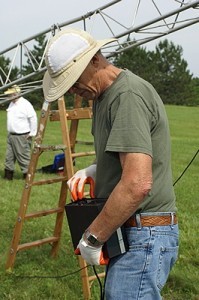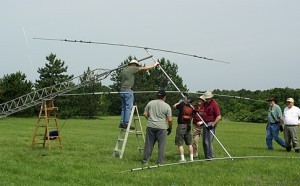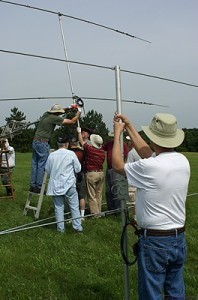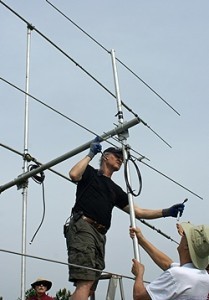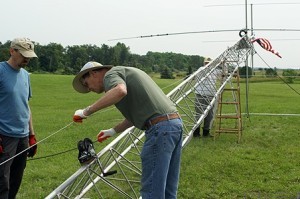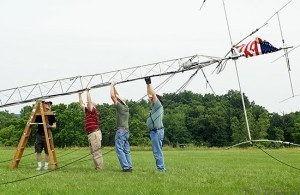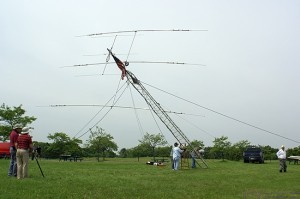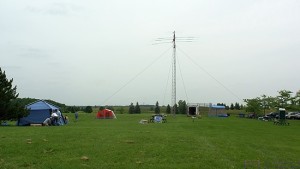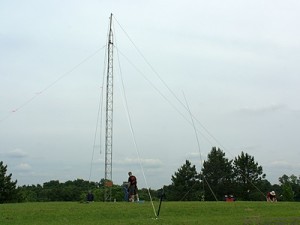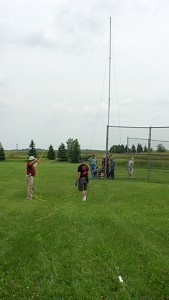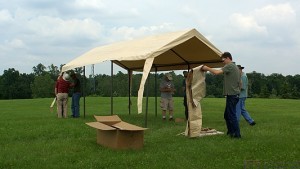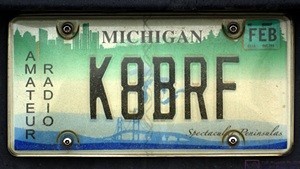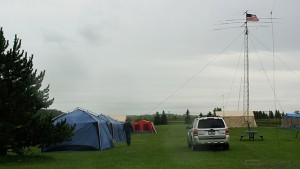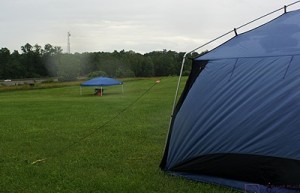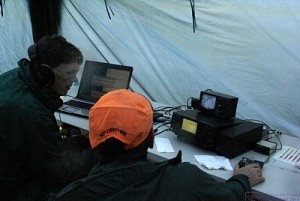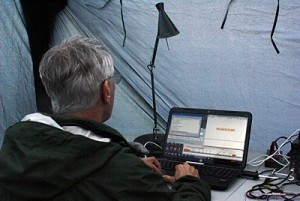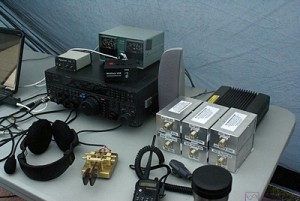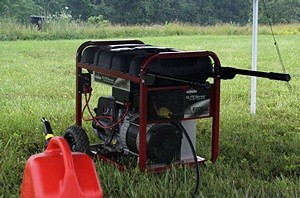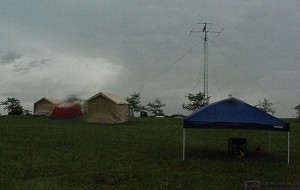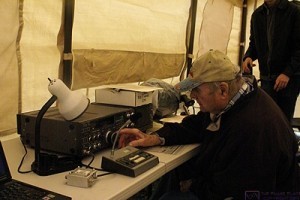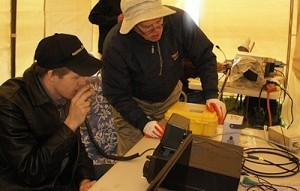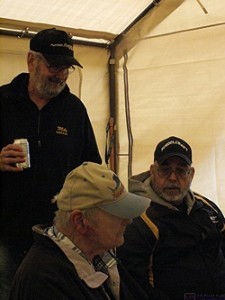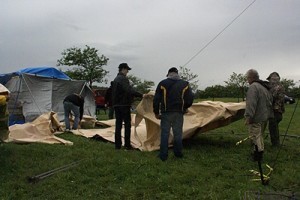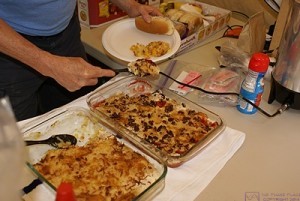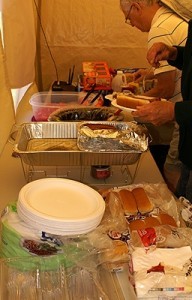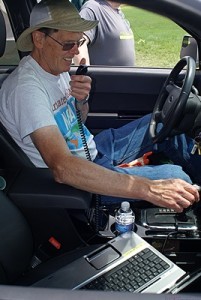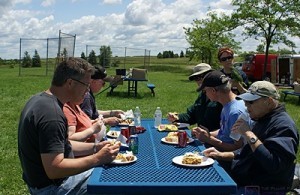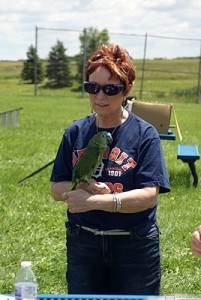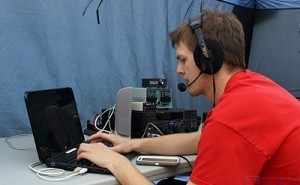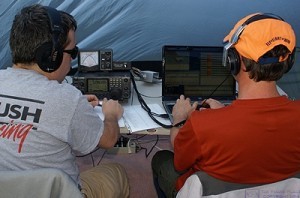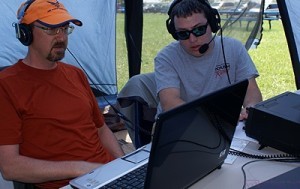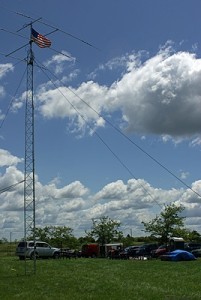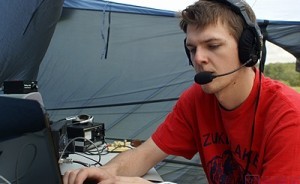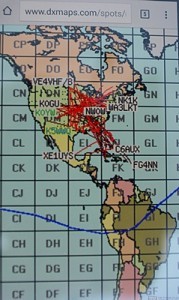Here are 45 photos from the South Lyon Area Amateur Radio Club’s participation in the 2015 American Radio Relay League (ARRL) Field Day 24-hour operating event.
- Steve (N8AR) arrives on Friday morning with club’s Field Day equipment in his trailer.
- Larry (K8UT) and Bill (W8NN) start setting up Larry’s 40m elevated vertical antenna.
- One of the wire antennas, probably the 40m inverted V (crossed dipoles).
- The base for the small tower. The boards are bolted together and staked into the ground. The three metal yokes in the center hold the three legs.
- The feed point balun and elevated wire counterpoise attachment point for K8UT’s 40m vertical antenna.
- Unloading tower sections from the equipment trailer.
- Mike (W8XH) poses for the camera before unloading more equipment.
- Bill, Larry, and Tom (AB8XU) start assembling the 20m beam antenna.
- Larry and Tom carry the 20m beam antenna over to where the tower will be erected.
- Jim (N8HAM) and Steve (N8AR) get the legs of the large tower attached to the base (black metal).
- Assembling and erecting the big tower took quite a few hams. The top end is resting on a step ladder so the beam antennas can be attached before standing it up.
- Steve (N8AR) turns the rotor to the correct position for attaching the beam antennas to the large tower.
- A team gets ready to hand the 20m beam antenna up to Steve.
- Larry waits with the 6m beam antenna while the 20m beam antenna gets attached to the mast atop the large tower.
- SLAARC Field Day chairman Paul (KD8SNZ) attaches the 6m beam antenna above the 20m beam antenna.
- Steve (N8AR) checks the cable for the hand winch that will be used to raise the large tower.
- It takes many hands to raise the large tower. Mike, Steve, and John walk the tower up as Paul moves the step ladder closer to the base. We had to get the tower up part way before we could use the winch.
- The other end of the winch cable was attached to the tow receiver on Pauls F-150. Here the tower is not quite half way up.
- The large tower is up. The guy ropes were attached and staked before it was raised, used to control it as it went up, and then tightened.
- The weather has turned gloomy on us.
- Putting up the mast by the old ball diamond backstop. The mast will support the far end of the 80m off-center-fed dipole. The other end is attached to the large tower with the feed point balun near the 80m operating tent.
- Putting up one of the two Costco shelter. One served as the food tent and the other as the GOTA and VHF tent.
- Setup continues on Saturday morning. There were lots of these ARO vanity plates to be seen. This one is mine.
- The main portion of the SLAARC Field Day site. The 40m vertical is off-camera to the left and the crossed dipole is behind me. Everything must be contained within a 1,000 foot diameter circle.
- The weather has really deteriorated very strong wind driven rain.
- Inside one of the operating tents (probably 40m). Every operating position had a computer (left) and radio (right). Computers were used to log contacts and were Wi-Fi networked. Operators at every station could see all of the contacts that were being logged.
- Larry (K8UT) gets N1MM Logger+ up and running. Larry is a member of the N1MM Logger development team.
- Headphones, CW keys, and filters are just some of the additional equipment needed at each operating station.
- SLAARC operated in category 2A (two alpha). The two meant we had two HF radios on the air at the same time. The alpha meant we operated only from portable/emergency power. Harvey (AC8NO) provided the generator that ran everything.
- The weather just got worse the latter it got in the day on Saturday.
- Jim (KC8WMW) mans the GOTA (Get On The Air) station. Newly licensed hams and unlicensed guests are allowed to operate this station under the supervision of an experienced amateur radio operator.
- Eric (W8ERS, seated) and Mike (W8XH, standing) working on the VHF (6m) station.
- Staying out of the weather and having a face-to-face chat at the GOTA station.
- We lost the 80m tent (red), the hospitality screen room (left) and the VHF/GOTA Costco shelter to the windy weather.
- We did not, however, lose the food shelter! Marianne provided lots of things to eat and there was always a crowd staying out of the weather.
- Sunday lunch. Hot dogs are easy and always a favorite.
- Steve (N8AR) had a 6m capable radio in his car, so after we lost the 6m (VHF) / GOTA tent he pulled his car up and connected the 6m beam to his radio. Why? There was a strong 6m opening early Sunday east of the Mississippi River and down into the Caribbean.
- The weather finally cleared on Sunday and folks enjoyed eating outside.
- Jo (Mrs. Field Day Chairman) with their pet parrot Darwin (female).
- Eric (K8ERS) made the most contacts for the club at this year’s Field Day event.
- SONY DSC
- Signals are often weak with a lot of noise. Headphones keep distractions from ambient background soiunds to a minimum.
- Amateur radio is regulated under Part 97 of the FCC Rules. SLAARC traditionally flies the U. S. Flag from our large tower.
- Eric (K8ERS) was making contacts right up to the 2 P (EDT) end of the event.
- Eric captured this image early Sunday morning. The red lines represent contacts being made on the 6m (50 MHz) VHF band. It was quite an opening.
